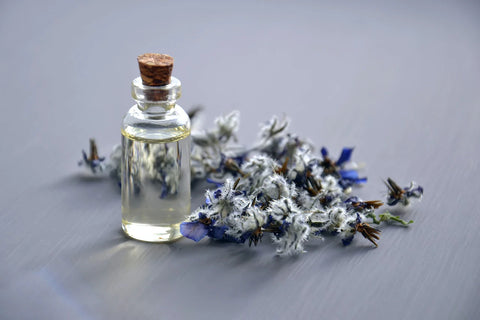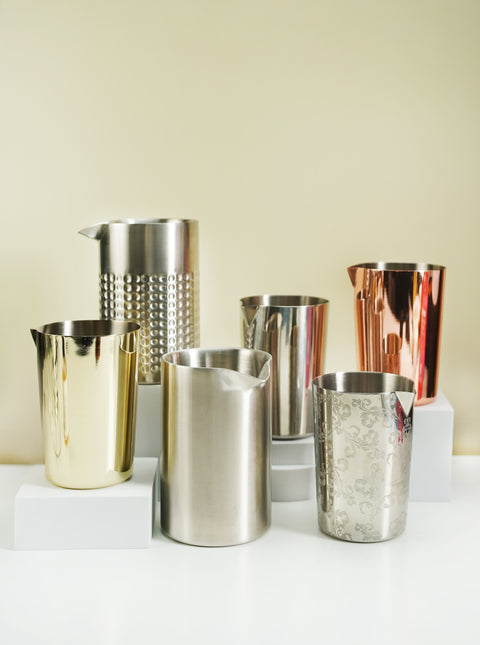How it all started
The history of the cocktail industry is a long and fascinating one, tracing the evolution of this beloved beverage type from its humble origins to its current status as a vital part of modern culture. The origins of the cocktail can be traced back to the 18th century, when the first reference to the word "cocktail" appeared in print. At this time, the cocktail was a simple mixture of spirits, sugar, water, and bitters, served as a morning pick-me-up for patrons of bars and taverns.
The first known reference to the word "cocktail" appeared in print in the early 19th century. The exact date and source of the first use of the word is debated among scholars, but the most widely accepted theory is that it first appeared in the newspaper "The Balance and Columbian Repository" in 1806. The paper, published in Hudson, New York, defined a cocktail as "a stimulating liquor, composed of spirits of any kind, sugar, water, and bitters."
It's worth noting that the word "cocktail" was in use with a slightly different meaning before it was used to describe the drink. The word "cocktail" originally meant a horse's tail and was used to describe a horse with a good tail. It is not clear how the word was applied to the drink, but it is thought that it may have been due to the tail-like shape of the drink in its early days, which was often served in tall, narrow glasses.
Also, it's important to note that the first published definition of a cocktail by "The Balance and Columbian Repository" is not considered as the first cocktail, as the drink itself existed before the word cocktail was coined. There were different types of mixed drinks that existed in the 18th century such as punch and flips.

Cocktail during the Prohibition era
The Prohibition era in the United States, from 1920 to 1933, was a time when the sale, manufacture, and transportation of alcohol were illegal. This created a significant challenge for the cocktail industry, as bars and taverns were forced to close, and the sale of alcohol became illegal. However, this also led to the rise of speakeasies, which were illegal establishments that sold alcohol. These speakeasies became popular spots for people looking to purchase and consume alcohol, and they also served as the birthplace of many new and creative cocktails.
During the Prohibition era, bartenders had to be creative in order to hide the taste of poor-quality bootleg alcohol, which was often made in unsanitary conditions. They used various methods such as dilution, adding strong-tasting syrups, and using fruits to mask the taste. The use of fresh fruits, juices, and syrups in cocktails was a direct result of the prohibition era. This led to the creation of new cocktails, such as the Sidecar, the Daisy, and the Sour, which were designed to mask the taste of the alcohol and make it more palatable.
Sidecar cocktail:
- 2 oz cognac or brandy
- 3/4 oz Cointreau or triple sec
- 3/4 oz fresh lemon juice
- sugar for rimming the glass
Instructions:
- Rim a chilled cocktail glass with sugar by rubbing a lemon wedge around the rim, then dip the rim into a plate of sugar.
- In a shaker filled with ice, combine the cognac or brandy, Cointreau or triple sec, and lemon juice.
- Shake well until chilled and strain into the prepared glass.
- Garnish with a lemon twist, if desired.

Another trend that emerged during the Prohibition era was the rise of the "bathtub gin", a homemade gin made in bathtubs, which was often of poor quality. To mask the taste and smell of bathtub gin, Bartenders would often use strong and flavorful ingredients such as absinthe, chartreuse, and orange bitters. The popularity of these ingredients in cocktails also helped to establish the trend of using high-quality ingredients in cocktails.
Speakeasies also served as a place for social gatherings and entertainment, and jazz music became an essential part of the speakeasy culture. Many famous jazz musicians such as Louis Armstrong and Duke Ellington performed in speakeasies, and this further popularized the cocktail culture.
Post Prohibition
After the end of Prohibition in 1933, the cocktail industry began to experience a resurgence. With the legal sale of alcohol once again permitted, bars and taverns were able to reopen, and the cocktail culture began to thrive. The demand for cocktails increased, and the industry began to grow and evolve once again.
One of the most notable changes that occurred after the end of Prohibition was the shift towards more sophisticated and refined cocktails. Classic cocktails such as the Martini, the Manhattan, and the Old Fashioned became popular, and the use of high-quality ingredients, such as premium spirits and fresh fruits and juices, became increasingly important.
Another trend that emerged after Prohibition was the rise of Tiki culture. Tiki bars and tropical-themed cocktails became popular in the United States, particularly in the 1950s and 1960s. Tiki cocktails often featured exotic ingredients such as rum, pineapple juice, and coconut cream, and were served in decorative Tiki-style mugs.
The end of Prohibition also led to the growth of the cocktail industry in other ways. New technologies, such as the invention of the electric blender, allowed for the creation of new and creative cocktails, and the use of ice in cocktails became more widespread. Additionally, the rise of the airline industry in the post-war period led to an increased interest in exotic and tropical drinks, which further popularized tiki culture.
The end of Prohibition also marked the beginning of a new era for the cocktail industry in terms of the professionalization of bartending. Bartenders began to be seen as skilled professionals rather than just people who served drinks. Bartending schools, competitions and organizations started to appear, and the profession of bartending became more respected.
Vibrant 1980s
The 1980s was a decade of change in the cocktail industry. The trend of the 70s, which was focused on sophisticated and refined cocktails, continued to evolve in the 80s. However, new trends and styles also emerged, influenced by the cultural changes of the decade.
One of the most notable trends in the 1980s was the rise of the "power lunch" culture. Businessmen and women in the 1980s began to frequent upscale bars and restaurants during lunchtime, and the cocktail culture began to shift towards more formal and refined drinks. Classic cocktails such as the Martini, Manhattan, and Old Fashioned became increasingly popular during this time, and the use of premium spirits, such as gin, vodka, and whiskey, became more prevalent.
Another trend that emerged in the 1980s was the rise of the "big hair" era, and this is reflected in the cocktails. Cocktails with colorful, sweet and served in big glassware and often garnished with fruits and umbrellas became popular. Drinks like Margarita, Mai Tai, Pina Colada, Long Island Iced Tea, became popular.
Cocktail culture of the 21st century
In the beginning of the 21st century, the cocktail culture underwent a significant transformation. With the rise of the "craft cocktail" movement, bartenders began to focus on using high-quality, fresh ingredients and traditional techniques to create unique and complex drinks. This led to a renewed interest in classic cocktails and the use of obscure, high-quality spirits, such as small-batch gin, artisanal bitters, and rare liqueurs.
The craft cocktail movement also led to the emergence of the "mixology" trend, where bartenders were viewed as skilled artisans who spent years honing their craft. This trend was characterized by the use of complex techniques, such as barrel-aging and smoking, and the use of unusual ingredients, such as herbs and spices.

Bartenders began to focus on using locally-sourced, organic ingredients and reducing waste in their operations. This led to the emergence of "zero-waste" cocktails, which used all parts of the ingredient, such as using the pulp of a squeezed citrus to make a syrup.
Another trend that emerged in the early 21st century was the rise of the "speakeasy" style bars, which were modeled after the illegal establishments of the Prohibition era. These bars often featured a discreet entrance, a cozy atmosphere, and a focus on classic cocktails and rare spirits.
In addition, the 21st century also saw an increased interest in non-alcoholic cocktails, with more people looking for alternatives to traditional drinks. This led to the emergence of new and creative non-alcoholic cocktails, such as mocktails and shrubs, which use ingredients like herbs, fruit, and spices.
Cocktails are like a good book, it's best to have a variety on hand to suit different moods.
Just as a good book collection should have a variety of genres to suit different moods, a good cocktail collection should also have a variety of different styles and ingredients to suit different tastes and preferences. Cocktails went a long way since their first appearance and we truly appreciate their history.


